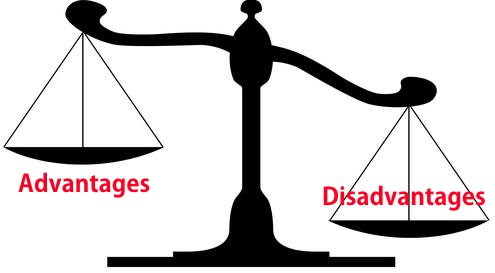Variable Annuity Highlights
What is a variable annuity?
A variable annuity is a contract between yourself and the insurance company in which the insurance firm agrees to provide periodic payouts to you, commencing immediately or at a future date. You (the investor) buys a variable annuity account by making a single lump-sum payment, or a series of many purchase payments.

When buying the annuity contract, you’ll be presented with a wide variety of investment options to select from. These investment options are usually mutual funds invested in bonds, stocks, and other money-market instruments. The entire value of your annuity investment will be determined by the market performance of the investment options that you select.
How variable annuities work
Variable annuities are meant to be a long term investment vehicle towards meeting income goals during retirement. Variable annuities are not ideal for short-term investment goals since they’re typically subjected to hefty fees in the case of early withdrawals. Although variable annuities vary from typical mutual funds in that they have are tax-deferred, have a death benefit and periodic payouts, they carry an investment risk (just like mutual funds).
Variable annuities have an accumulation and payout phases. Within the accumulation phase, you (the investor) makes purchase payments, which are allocated to selected investment options. For instance, you could specify that 40% of your investment goes to a bond investment fund, another 40% goes to a local stock fund, and the remaining 20% to an international/global stock fund. Depending on the performance of each investment option that you have selected, your money will either grow or shrink over time. Most (if not all) variable annuities also allow you to allocate a small portion of your investment to a fixed account that pays out a fixed interest rate per year (e.g. 3%).

Some of the top variable annuity products in the market offer about 60 (and up to 100) investment options to choose from. The most crucial source of info on the available investment option is the prospectus. Before you commit to buying the annuity, read the prospectus carefully and choose wisely. Take note of any management fees or other expenses associated with the specific mutual fund (investment option) that you elect. An annuity product specialist or your regular financial advisor can help you make the right choice.
Within the accumulation phase of your variable annuity, you have the flexibility to juggle your money between different investment options without paying any taxes on investment income gains. However, if you withdraw your investment within the accumulation period, you may be subjected to hefty surrender charges. An IRS tax penalty of 10% is also applied if your withdrawal your money before you hit the age 59½ years.
At the start of the payout phase, investors may receive their payouts (including investment gains, if there are any) either in lump-sum, or as a regular income stream paid out monthly (or quarterly, based on your preference). If you do not need the money paid out to you as a lump sum, you’ll choose how many years you want to continue receiving payments. You may choose to receive income payouts over a period of 10 years, 20 years, or throughout your lifetime (or spouse’s lifetime).
Immediate variable annuities
Some variable annuities are designed as immediate. This means they don’t have an accumulation phase, and investors start receiving income payouts as soon as you buy the annuity.
Death benefit & other variable annuity features
Most (if not all) of variable annuities have a death benefit. With the death benefit, your elected beneficiaries receive a lump sum payment that’s the greater of; the entire money remaining in your annuity account, or a set guaranteed minimum. Some variable annuities may include a stepped-up death benefit rider that has the potential to increase the death benefit amount. This rider is available an additional annual charge.
A terminal illness waiver and a nursing care waiver are also included (usually automatically, at no extra free) in the annuity contract. These waivers make it possible for you to access your investment (annuity account value) without any withdrawal charges if you’re confined to a nursing home or any other hospitalization center for at least 60 consecutive days, or diagnosed with a terminal illness that’s expected to cause death within a year.
Other optional features common with variable annuities include a guaranteed minimum income benefit (which guarantees a minimum level of annuity payouts regardless of how your investment options perform), and long-term care insurance (which pays out for qualified long-term care needs).
Variable Annuity fees and charges
When you invest in a variable annuity, you’ll have to service various charges and fees. These charges essentially reduce the account value and ROI (return on investment):
- Surrender charges – if you withdraw your variable annuity contract value within a specified period of time (typically 6-10 years with most products), your withdrawal will be subjected to a surrender charge. The surrender charge is a sort of a sales charge and is computed as a percentage of the withdrawal amount. Before you buy an annuity, it’s important to consider the surrender charges (virtually all company will detail their surrender charge details) just in case you need to access your money fast in case of an emergency.
- Mortality and expense risk charge – this is a charge that’s equal to a specific percentage of your account value (about 1.25% annually), and that compensates for the insurance risk it takes under the annuity contract.
- Administration fees – deducted to cover administrative expenses such as record-keeping. In most cases, this is a flat-out fee (e.g. $50 per year) but can sometimes be a percentage of your account value.
- Underlying fund expenses – you (the investor) has to pay for all fees and expenses associated to the mutual fund (investment options) that you selected for your variable annuity contract.
- Charges for other features – optional features such as long term care insurance, stepped-up death benefit, and the guaranteed minimum income benefit usually come at an additional annual fee.
Depending on the specific variable annuity contract, other fees might be applicable.
Tax-free exchanges “1035 Exchanges”
Section 1035 of the U.S. tax code makes it possible for investors to exchange their existing variable annuity contract with a new annuity contract without being subjected to taxes on the investment gains of their current annuity. These tax-free exchanges are known as “1035 exchanges”. If you’re still within the surrender charge period (first years of the contract when surrender fees are applicable), you may have to pay surrender charges.
Advantages and disadvantages of variable annuities
Just like any other retirement investment vehicle, variable annuities have their benefits and disadvantages.
One key advantage of variable annuities is that they have a higher growth potential compared to fixed annuities. The range of investment choices is also a major plus for investors who are looking for some flexibility.
Disadvantages of variable annuities include having a higher investment risk compared to other annuity types, and higher maintenance fees.
Are variable annuities the right choice for me?

If you’ve already maxed out your contribution to IRAs and 401(k)s (both of which provide tax-deferral advantages without an extra layer of fees), then variable annuities can help boost your retirement savings.
If you want a flexible investment that carries more potential for growth compared to fixed annuities, then you may want to consider variable annuities.
If you decide to invest in a variable annuity product, limit yourself to one that has low annual maintenance fees.
Factors to consider before buying a variable annuity
Before you commit to buy any variable annuity product, it’s important to consider the financial power of the insurer behind the annuity. This can impact the ability of the company to pay out benefits in excess of the account value, such as death benefits, long-term care benefits, guaranteed minimum income benefit, etc.
Before you elect any benefit or additional feature in your variable annuity, make sure that you UNDERSTAND all the applicable charges. Carefully evaluate whether you REALLY need this benefit. Compare to see if you can get the same benefit cheaper with another annuity product, or by purchasing it separately (e.g. via an LTC (long-term care) policy).
Asking questions before you buy a variable annuity
Your financial advisor or insurance agent has a duty to provide accurate information that’ll help you decide whether a particular variable annuity meets your investment needs. Don’t be afraid to ask as many questions as you can raise.
Typically, variable annuities have a free lock period of at least 10 days. This is a period of time during which you can terminate your contract and get back your purchase payments without incurring any surrender charges. You are free to continue asking questions about the variable annuity during this period.


